Lindera benzoin, Spicebush, is a native deciduous shrub that is about 5-15 ft. tall. The plant blooms in early spring before the leaves emerge. The leaves when crushed give off a spicy aroma, therefore, the common name - spicebush
Flowers
Although the individual flowers are very small, the dense clusters are very visible along the branches. The individual flowers are less than a quarter inch and have 6 yellow to greenish yellow sepals and are nearly sessile.
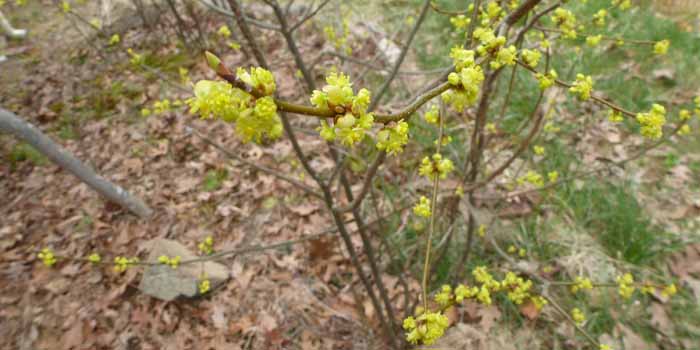
On close examination of the flowers one will find that Lindera benzoin is mostly dioecious. The entire genus - Lindera, is mostly dioecious, dioecious - meaning that there are separate female ( pistillate ) flowers and male ( staminate ) flowers and they occur on separate plants. The three photos below show female flowers and the female (pistil) parts. The white spots (stigma) are the distal end of the pistil, then the long style and the large oval ovary. At the base of the ovary are the infertile rudimentary stamens ( staminodes ) which produce nectar.
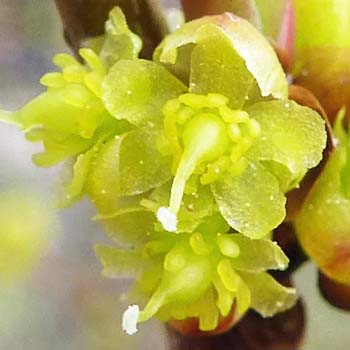
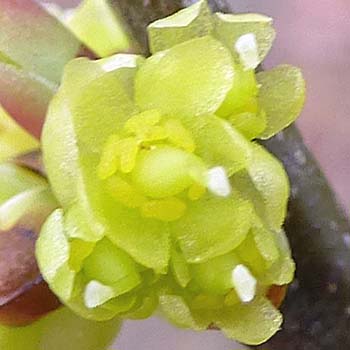
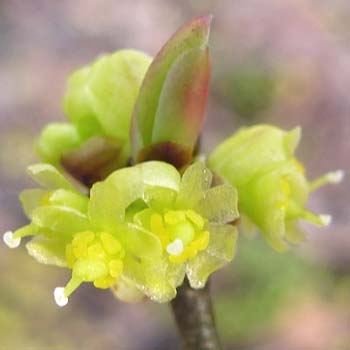
The male flower is slightly larger with a rudimentary pistil and 9 stamens with the inner most 3 stamens having nectar glands at the base. These can be seen in the highly magnified image below. The stamens (male parts) are unusual. Each stamen has two anthers that each emerge out of an opening at the end of the filament.
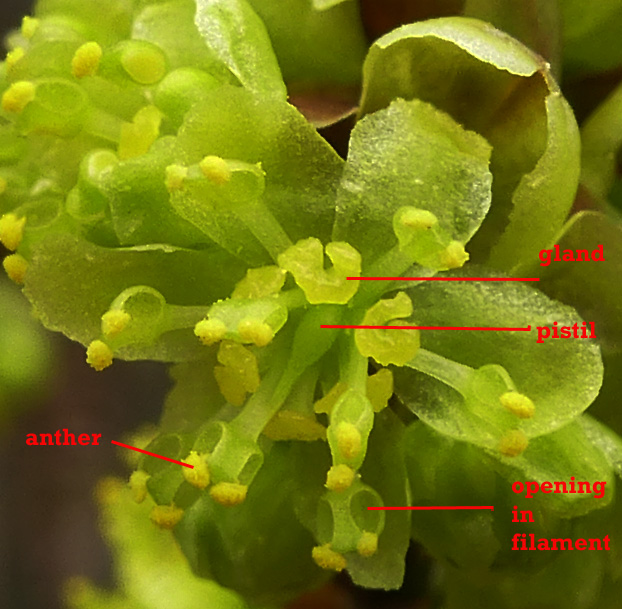
In the next photo below, the stamens are less mature and one can see the flaps that cover the openings at the end of the filaments. The flaps appear as yellow disks.
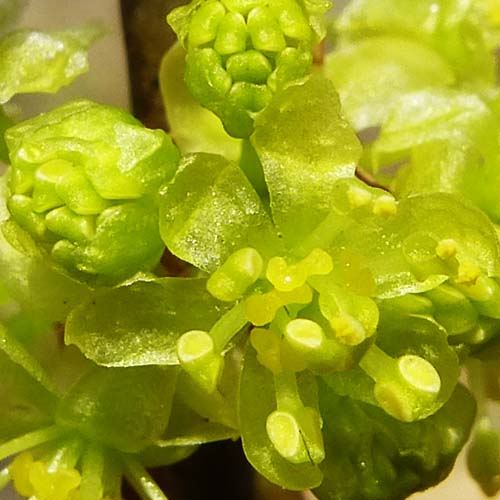
These photos were taken around 4/13/2014.
Fruit & Leaves
The fruit ripens to a bright red oblong drupe (fleshy layer over a hard pit containing one seed)
The leaves are not distinctive. They are simple, alternate, and elliptic in shape, pointed at the top and bottom and sometimes broadest slightly above the middle. The terminal leaves are generally the largest about 5" long.
Photo taken 9/10/2014.

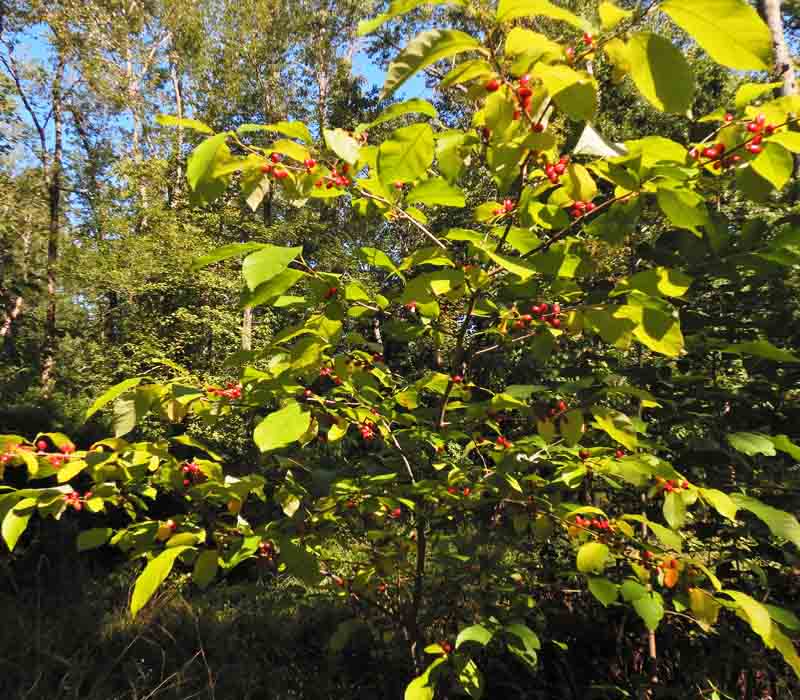
The above photo with all the red berries was taken 9/12/2023 along Patriots Path in Morris county. We went back the follow week and not a single berry was left!
Bark & Lenticels
The bark is brownish with lots of lenticels. Lenticels are raised powdery, whitish, porous areas on the bark that serve for gas exchange.
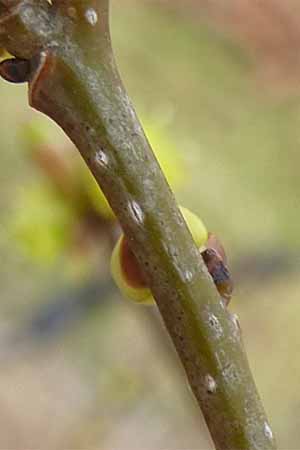
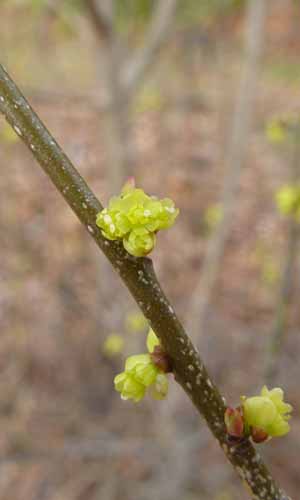
All photos by H & M Ling
Additional information
Additional information / references:
Illinois Wildflowers website is very informative on each plant that they have: http://www.illinoiswildflowers.info/trees/plants/spicebush.htm
This is Virgina Native Plant Society's Wildflower of the Year article on Spicebush: http://vnps.org/wp-content/uploads/2013/09/woy2006_lindera.pdf
A diagram labeling the glands at the base of the stamen is shown here:
diagram of glands at base of stamen
This is a technical article that discusses the function of the staminodes:
staminodes secreting nectar